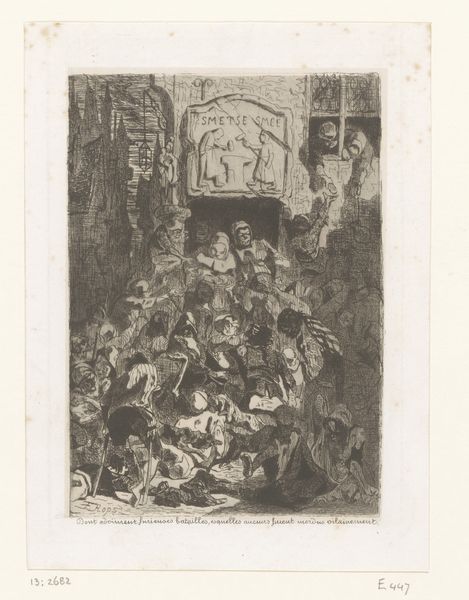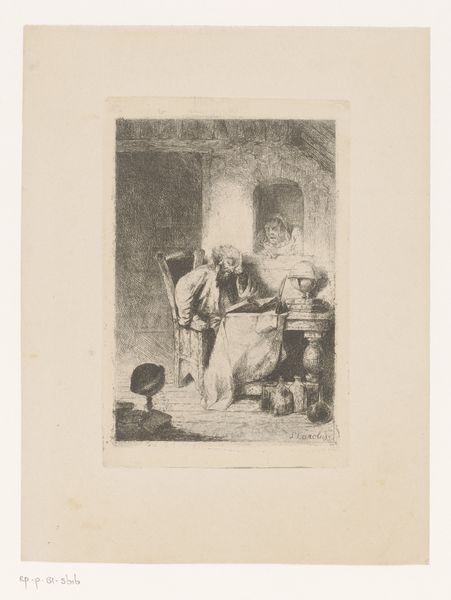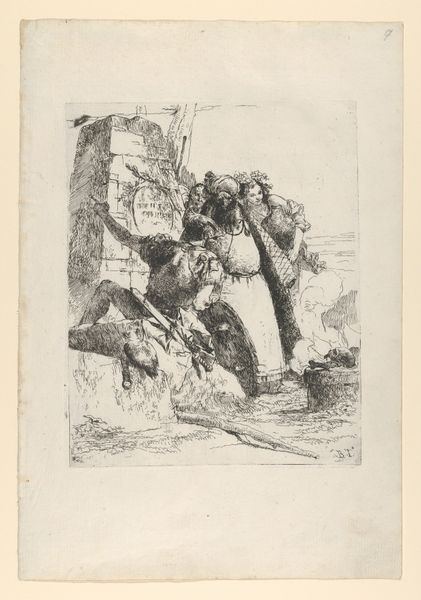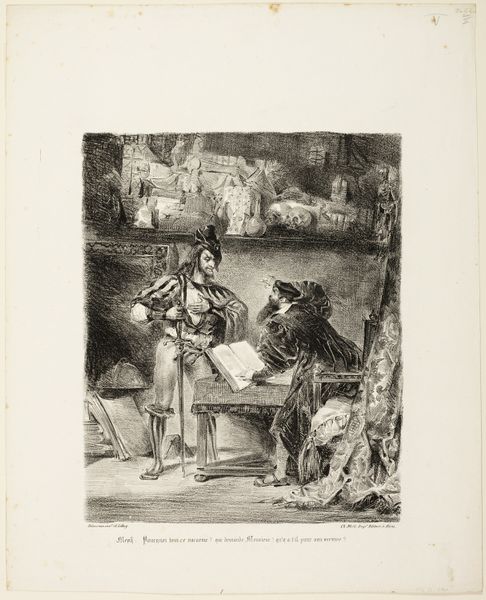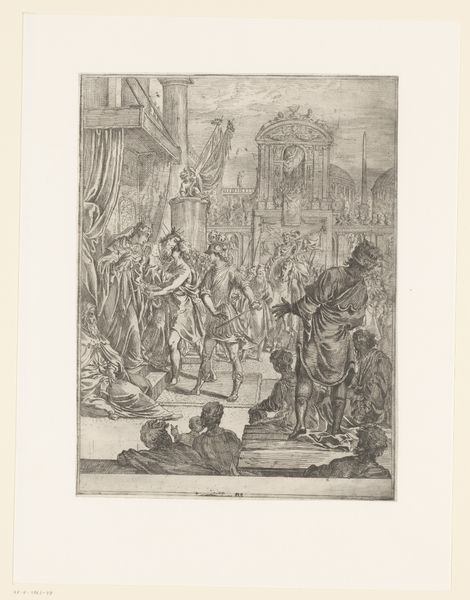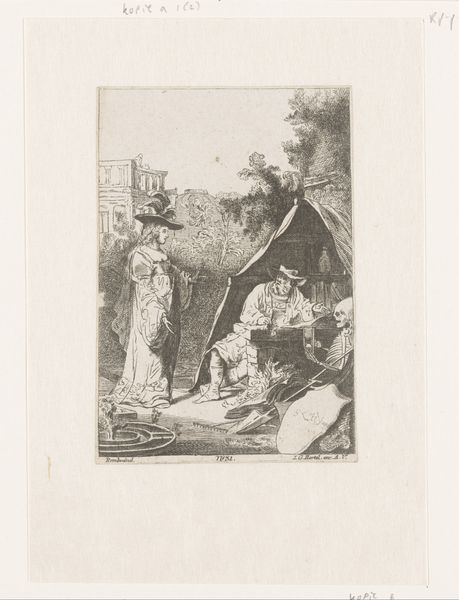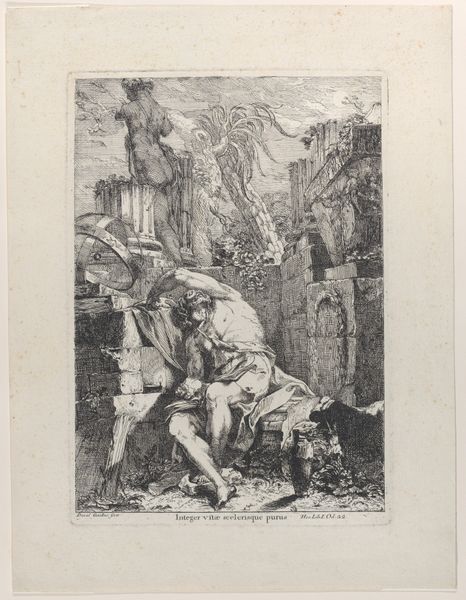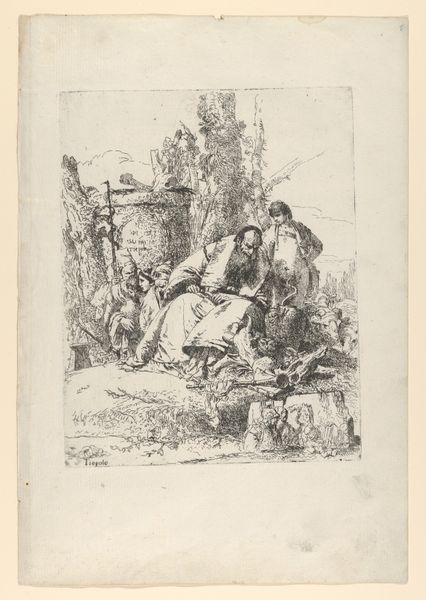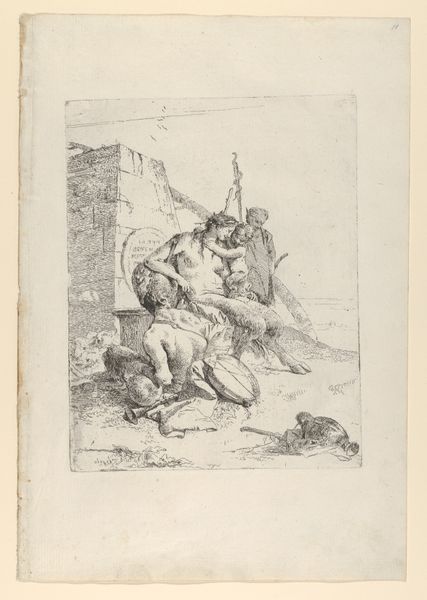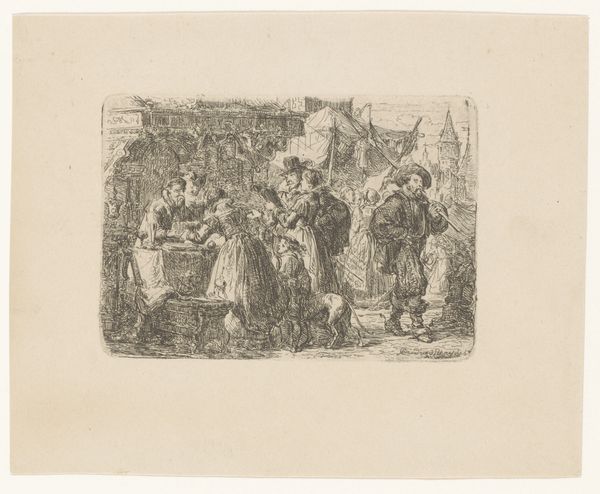
print, etching
#
baroque
# print
#
etching
#
old engraving style
#
traditional media
#
landscape
#
figuration
#
sketchbook drawing
#
genre-painting
Dimensions: height 274 mm, width 220 mm
Copyright: Rijks Museum: Open Domain
Curator: Right now, we are looking at "Fluitspelende herder en spinster", or "Shepherd Playing the Flute and Spinner," an etching attributed to an anonymous artist. It's part of the Rijksmuseum's collection and thought to have been made sometime between 1652 and 1733. Editor: Ah, I can already smell the countryside! There's something so simple and yet soothing about the composition. A shepherd playing his flute, a woman spinning, all surrounded by animals… it's idyllic, isn't it? Curator: Indeed. Note the medium; it is a print. What is interesting is the method by which this was achieved, with thin lines which creates texture that evokes rustic labor, domesticity, and the social roles embedded in rural life during that period. The creation of this piece—the etched line, the printing process—was much more accessible than, say, oil painting. Editor: True, you can almost feel the weight of the woman's hands at the spinning wheel, see the shepherd’s calloused fingers on his flute. But the image doesn't present the labor too hard, if I may say so. It almost romanticizes rural life, a very "golden age" take if you ask me! The etching captures this beautiful balance of work and rest. It feels timeless. Curator: Precisely. This resonates with broader historical trends and questions who has access to create art. Consider how this print could be circulated versus a painting? What does the labor in making a pastoral image tell us? Editor: It brings us to this intimate space, no? Looking closely, the hatching creates a beautiful sense of depth. Light and shadow playing around figures and animals. The anonymous aspect is intriguing—makes you think about intention, whose gaze are we really seeing? Curator: Exactly. I like to think about art as an agent within a broader context and historical trajectory. The means of creating an image reflects so much about society, labor and even artistic values during this period. Editor: Well, seeing it that way gives the image this fresh context for me! Now I feel invited into that very space in a way I didn’t at first. Curator: And hopefully, our listeners do too.
Comments
No comments
Be the first to comment and join the conversation on the ultimate creative platform.



